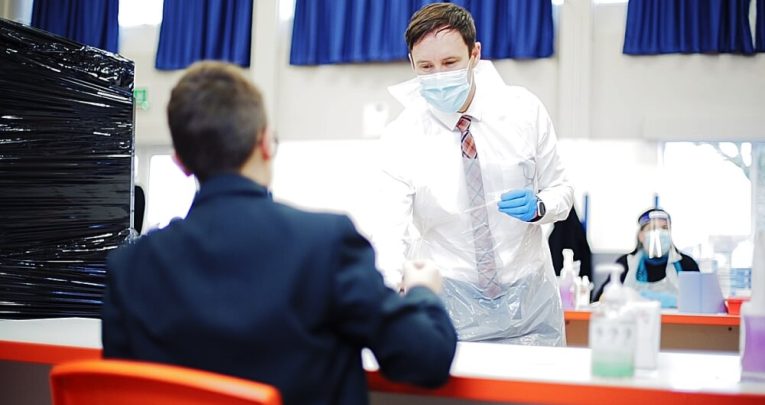“We sprang into action” – What one MAT learnt ahead of lockdown 3

MAT CEO Lucy Scott explains how her Trust’s experiences during last year’s lockdowns prompted she and her colleagues to approach the early weeks of 2021 rather differently…

- by Lucy Scott

When the announcement of the latest lockdown was made, it prompted very different feelings this time round compared to the lockdowns of last year.
There wasn’t the shared uncertainty, anxiety and stress as to the best route forward.
Instead, the senior leaders at each of the schools within our Trust were able to spring into action, immediately deploying the plans for transition and continuation of learning that we’d modelled, tested, analysed and improved during each prior lockdown, making this one our most successful yet.
The cornerstone of our thinking and approach to the January / February 2021 lockdown has been to adopt one core principle – for the experience of remote learning to be as close to the in-school experience as possible.
Critical reflection
What we’d learned previously was that vast uncertainty, coupled with the lack of any roadmap, could lead to paralysis in decision making.
Through critical reflection, we identified that just because there were multiple new remote learning options and technologies available, we shouldn’t completely change our recipe for successful learning in order to use them. Instead, we were able to deliver a better continuation of learning – one more reflective of our core principle – via the following methods:
Using our existing tools
This lockdown saw us switch our remote learning provision to Teams for the first time. The decision to do so was led by our remote learning co-ordinators, who evaluated the remote learning experiences of our students and staff and reported back to the Trust.
Of course, no platform is perfectly suited to every teacher and every lesson, but their recommendations did enable our leadership team to make quick decisions on the best format for delivering the type of remote teaching and learning we wanted, confident that this would be the best available option for all students.
Prioritising staff and student relationships
When assigning staff to both our in-school learning and remote provision, we prioritised the maintenance of existing relationships.
In our community, those students continuing to attend school are those most in need of progress support. Once each school knew who those students were going to be, we assigned senior leadership and progress support team members with whom these students already had established close and trusted relationships.
Our schools have also gone to great lengths to maintain their timetables in their entirety. Classes are taught by their usual teachers as far as possible, and all lessons are kept live, so that students and staff can rely on consistent contact time throughout the school day.
We’ve also created a ‘virtual staffroom’ for our teachers, enabling colleagues who are teaching remotely to come together in the same informal way that they would in school, while enabling those supportive peer-to-peer relationships that are so important.
Clear and engaging communication
As a leadership team, we decided that the current situation made it impossible to over-communicate with staff. We thus opted to scale up the communications flowing directly from the leadership team to each of our schools, and gave the schools themselves more opportunities to participate in peer-to-peer conversations.
We also diversified our communication methods, and are now regularly using more video when sharing knowledge. This not only helps keep everyone more engaged, but can also serve as a reference tool in future.
The way in which the schools across our Trust have risen to the challenges of the latest lockdown is nothing short of heroic. The feedback we’ve received from parents, praising both the collective and individual efforts of our staff, has been fantastic and served as a real motivator.
We’re confident that our approach to our remote learning timetable, and the safety measures we now have in place for continuing face-to-face learning, are providing our students with the best possible education that current circumstances allow, while minimising disruption. Our hope now is to share what’s worked for us, so that it might help other schools at this difficult time.
Lucy Scott is the CEO of Eastern Learning Alliance; for more information visit easternlearningalliance.org.uk or follow @ELA_Trust.











